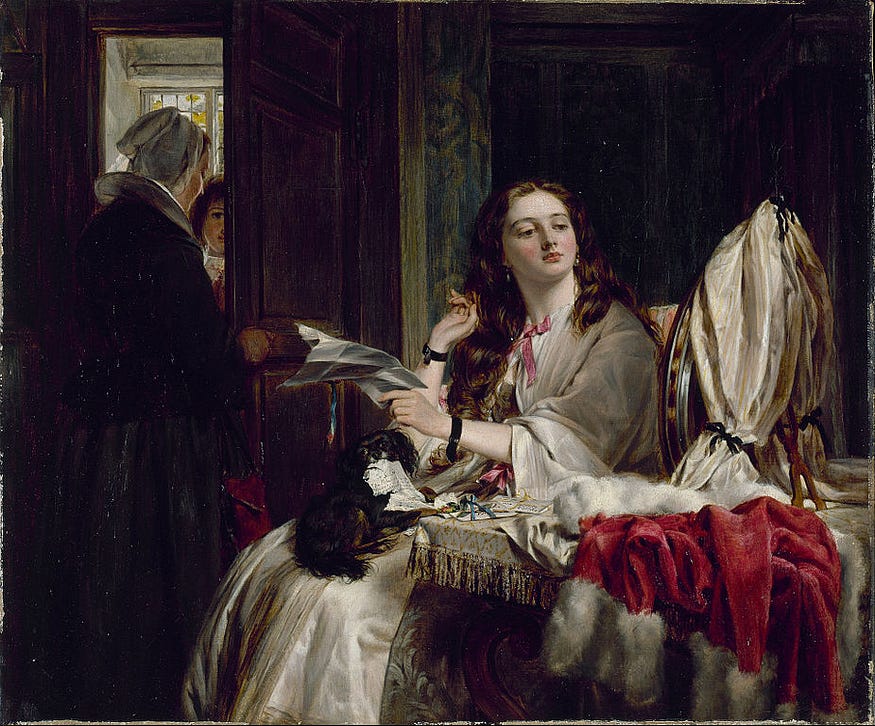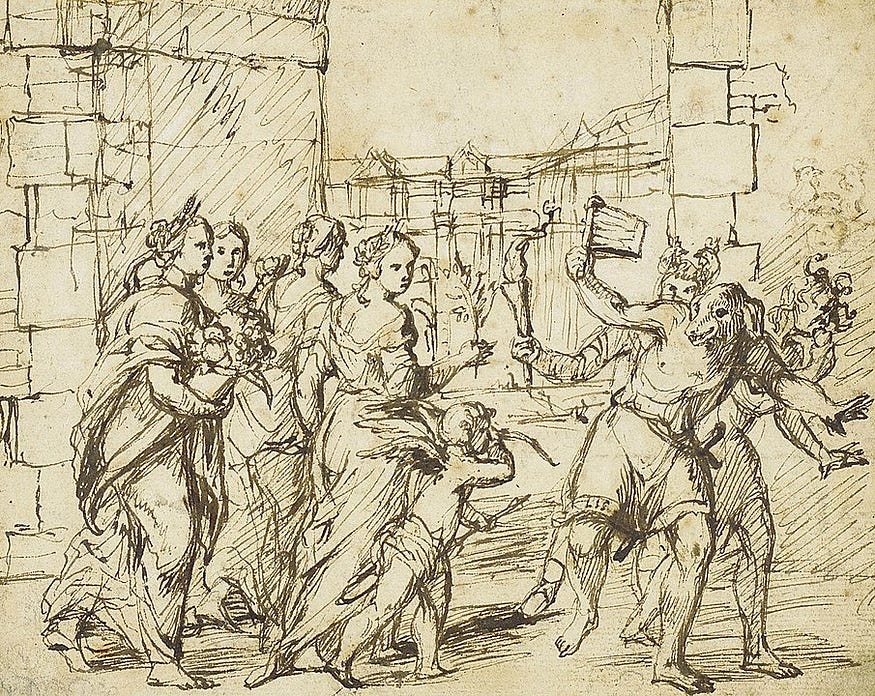In a few days, doe-eyed couples donning red will gaze adoringly into each other’s eyes to celebrate the wonders of love. I can’t wait! Personally, it’s my favorite holiday. (Yes, I am one of those people.)
But it’s probably not for the reasons you might think. It’s the history that gets me all choked up.
Much like the holiday, Valentine's Day's origin is as nasty and confusing as an orange creme-filled chocolate. And no one seems to agree on which tale to tell the kiddos.
You do have options — we have a deranged emperor, a blind girl, a massacred saint, or a pagan fertility festival. And it all ends in the institution that ensnares (I mean unites) two people in wedded bliss.
Let’s start with the 3rd century A.D and the diabolical Emperor — Claudius Gothicus — otherwise known as “Claudius the Cruel.” He worked hard for that sobriquet. Claudius had a talent for massacring Goths.
He wasn’t too spectacular in the love department. There doesn’t seem to be a misses Gothicus pulling on his heartstrings in any part of this story. Sorry!

Not one for romance, Claudius didn’t want his soldiers coming to work all weak in the knees and missing their wives at home. His solution — he forbade marriage.
That’s not to say he didn’t allow his soldiers some recreational enjoyment. After one successful battle, he wrote to one of his generals that so many female Goths were captured that each of his soldiers could have not one….but two to three women to rape a piece. (Like I said, not much for romance.)
According to medieval legend, a priest named Valentine secretly wed couples behind Claudius’ back. Other historians believe Valentine’s real crime was baptizing pagans. Either way, Claudius wanted nothing to do with Christianity. When he found out, he was pissed and ordered Valentine to be put to death.
While Valentine was in prison, one of the judges, Asterius, came to pray with Valentine along with his blind daughter, Julia. Supposedly, after Julia and Valentine “prayed” together, her sight was miraculously restored. You see…love is not always blind.
But before Valentine was stoned and decapitated, he sent Julia a letter and signed it “From your Valentine.” awwwww… Isn’t that sweet? Hold that thought…
That’s one version. It’s certainly a romantic tale, but there isn’t a single historical record supporting it.
Now, let’s get to what we do know is true — the holiday’s pagan origins. If you grew up thoroughly indoctrinated in the Catholic Church, then this won’t come as any surprise — Catholics are always stealing all the fun pagan holidays. And they manage to make a depressing mess of them.
In 300 B.C, February 13th through February 15th marked the pagan festival of Lupercalia — a blood-soaked day of animal sacrifices, fertility rites, and lots and lots of sex.
The ritual began with the sacrifice of a goat or dog. The priests — called Luperci — would smear animal blood on their forehead. Thus, why we are so focused on the color red.
The ritual later evolved into something more risque. The men would take the sacrificed animals' skins and cut them into strips called februa. They would then slap women with these animal skins to increase their fertility. (I googled. Goatskin slapping does not increase fertility.)
Next, men's and women’s names were drawn from a lottery and matched up. You would then spend the holiday together. If you liked each other (because who wouldn’t like a man who slaps you with his goat)…then you would marry.
But in the 5th century A.D., Pope Gelasius, I declared February 14th as a Christian holiday to celebrate the martyrdom of St. Valentine. Romantic saints were in…pagan hi-jinx was out.

Today, several monasteries throughout Europe claim to have the skull of St. Valentine. Since they can’t possibly all be his skull, let’s go with the Basilica di Santa Maria in Rome (above) because I really love what they did with the flowers.

All these tales have dubious sources and might be Hallmark hogwash. But like most holidays smothered in lore, Valentine’s Day does have something sacred at its core — rituals.
St. Valentine died to protect the ritual of marriage. The pagans had their bizarre goat slapping ritual. And now we have the ritual of cards and chocolate.
We lost a lot of rituals in our pandemic years. This year, let’s honor our rituals. Whether it is eating a box of chocolates by yourself (mine!), wearing your hottest red dress, or slapping your lover with a goat…Valentine's Day is a day to make love sacred.





0 Comments